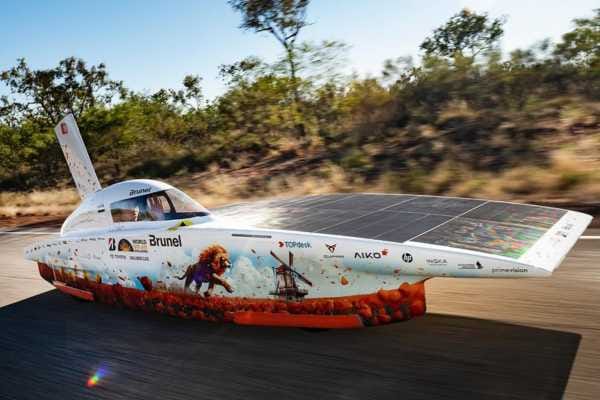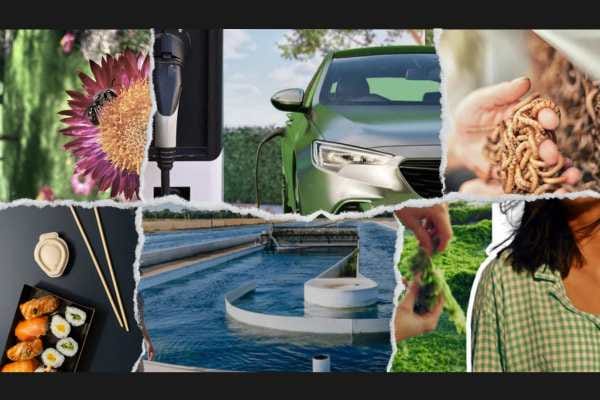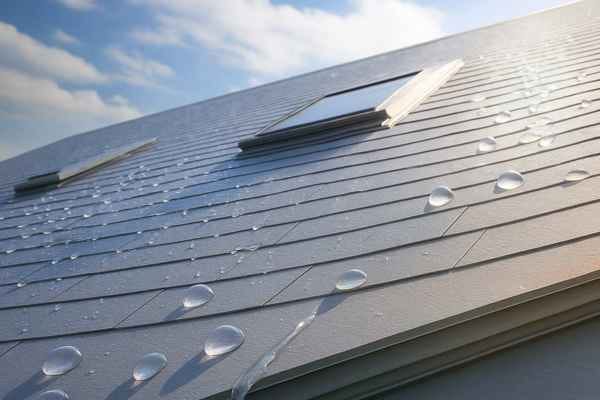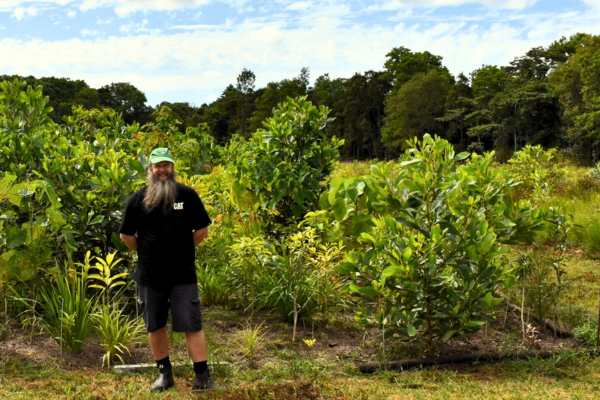Solar cars shine in Outback race
Teams from across the globe have raced from Darwin to Adelaide powered solely by the sun.

Harnessing nothing but the power of the sun, solar cars designed and engineered by students from 18 countries competed in this year’s 3000km race.
The Bridgestone World Solar Challenge (BWSC), now in its 36th year, is more than a test of speed, according to organisers.
The biennial event provides hands-on experience to students, they say, while testing breakthrough technologies for tomorrow’s EVs, and showcasing the future of sustainable transport.
A total of 34 solar-powered vehicles – six from Australia – entered the race with 17 of these completing the 3,021-kilometre course over five days, starting in Darwin in the Northern Territory and finishing in Adelaide, South Australia.
In the elite Challenger Class (single-seat solar racers), 26 teams competed, and in the Cruiser Class (multi-seat, practical solar vehicles), eight took part.
Aerodynamic fins
Taking line honours in the Challenger Class was the Brunel team from Delft University of Technology in the Netherlands. Their vehicle, Nuna 13, was equipped with an aerodynamic canopy fin and an additional 'swordfin' that they said helped harness favourable wind conditions. Nuna 13 averaged 86.6 km/h during the race.
“The Bridgestone World Solar Challenge is the pinnacle of solar car racing and the highest stage for the technological developments in solar cell engineering,” the Brunel team said.
“With our focus on inspiring people about sustainable technology, the BWSC is the best way to reach the largest audience.”
Other European teams also performed strongly with Team Twente, also from the Netherlands, finishing second, and previous BWSC winner Innoptus from Belgium taking third place.
Just 30 minutes separated the top three teams, race organisers said, and of the nine teams that finished on day five, less than 4 hours and 7 minutes separated them. Japan’s Tokai University team and Australia’s Western Sydney University team were only one minute apart, with the local team placing sixth.
Teams from Michigan, Sweden, and Canada, as well as those from Hungary, Switzerland, and Japan, also performed strongly in the Challenger Class, organisers said.
“The Bridgestone World Solar Challenge is the pinnacle of solar car racing and the highest stage for the technological developments in solar cell engineering.”
This year’s race took place in August instead of the usual October, bringing cooler temperatures for participants – but also reduced solar energy and stronger winds. Despite the tougher conditions, more teams completed the course than in 2023, which organisers attributed to improvements in solar vehicle design.
As well as giving students hands-on experience, organisers say the race also helps foster partnerships across industries, including energy, automotive, engineering, finance, material sciences, and IT.
Major race partner Bridgestone, for instance, said it had used the event as a proving ground for next-generation tyres, while more than 1,000 race participants gained experience pushing the boundaries of sustainable mobility.
“Bridgestone World Solar Challenge alumni have progressed from participation in our event to employment with some of the world’s leading engineering, automotive, and sustainable transport companies,” organisers said.
Solar vehicle startups like Aptera, Lightyear, and Sono Motors are also actively working to make solar-powered cars a viable option, but to date, limitations such as restricted space for solar panels and challenges with energy storage have limited mainstream development. Future advancements in these technologies could improve their practicality.
Real-world racing
In the Cruiser Class, which focuses on solar efficiency, comfort, and real-world practicality, victory went to the VTC Solar Car Team from Hong Kong. Their aerodynamic vehicle, Sophie 8X, narrowly beat Estonia’s Solaride, whose strong emphasis on safety and comfort earned them design honours and a time advantage.
Italian team Onda Solare claimed third place in the Cruiser Class, despite their vehicle, Emilia 5.9, arriving in Darwin only three days before the race began.
The awards ceremony was held on Sunday and celebrated not just rankings, but also innovation, safety, and team spirit.
The Event Safety Award went to Canada’s Eclipse ETS, Italy’s Onda Solare received the CSIRO Technical Innovation Award, and the David Fewchuk Spirit of the Event Award was presented to the Mechanical Scrutineering Team & NT MVR (Scott Smith).
The University of Michigan took home both the Rinstrum Precision Weight Award and the PR and Media Award, and the Iron Lions solar car team from the US received the Bridgestone E8 Commitment Award for demonstrating sustainability values.
A special CSIRO award was also presented to Dr David Rand AM, who is retiring after decades of contributing to battery safety and regulation for the event.
The Netherlands-based team Brunel claimed line honours in the Challenger Class with their solar vehicle, Nuna 13. The car, which was built by a group of 18 students, maintained an average speed of 86.6 km/h during the race. Its makers say the Nuna 13 prioritises aerodynamic efficiency, lightweight design, and energy optimisation. The vehicle features a 6 m², three-wheeled, asymmetrical catamaran design that harnesses both solar and wind energy. It includes a retractable, angle-adjustable fin to capture wind power and enhance straight-line stability. Additional aerodynamic elements, such as a canopy fin and a "swordfin", function like aeroplane wings to catch side winds and provide extra propulsion. It is also equipped with high-efficiency solar cells, advanced battery management, efficient power conversion, and a low-friction drivetrain.
Related Stories







